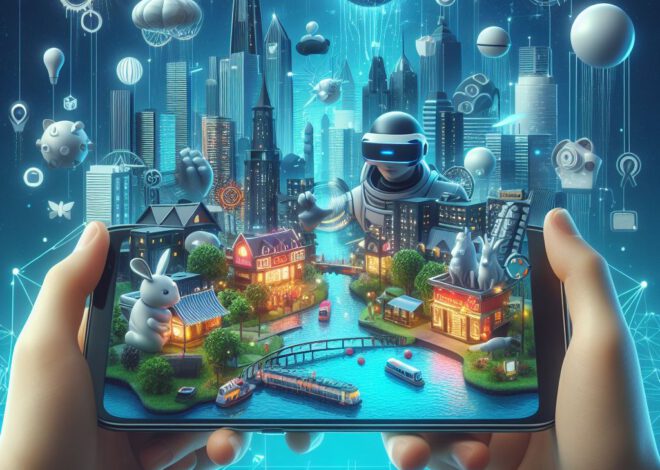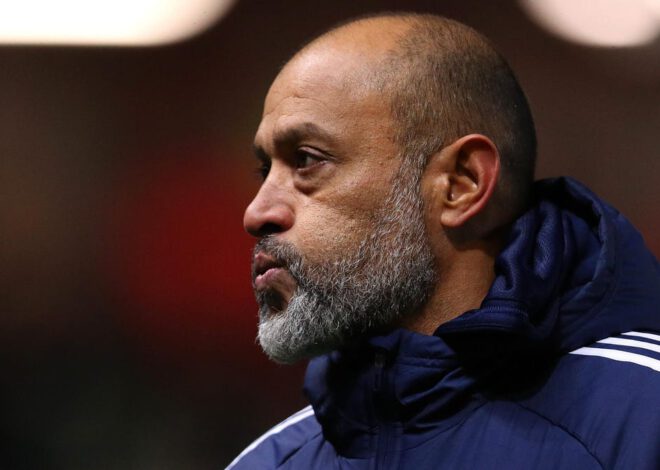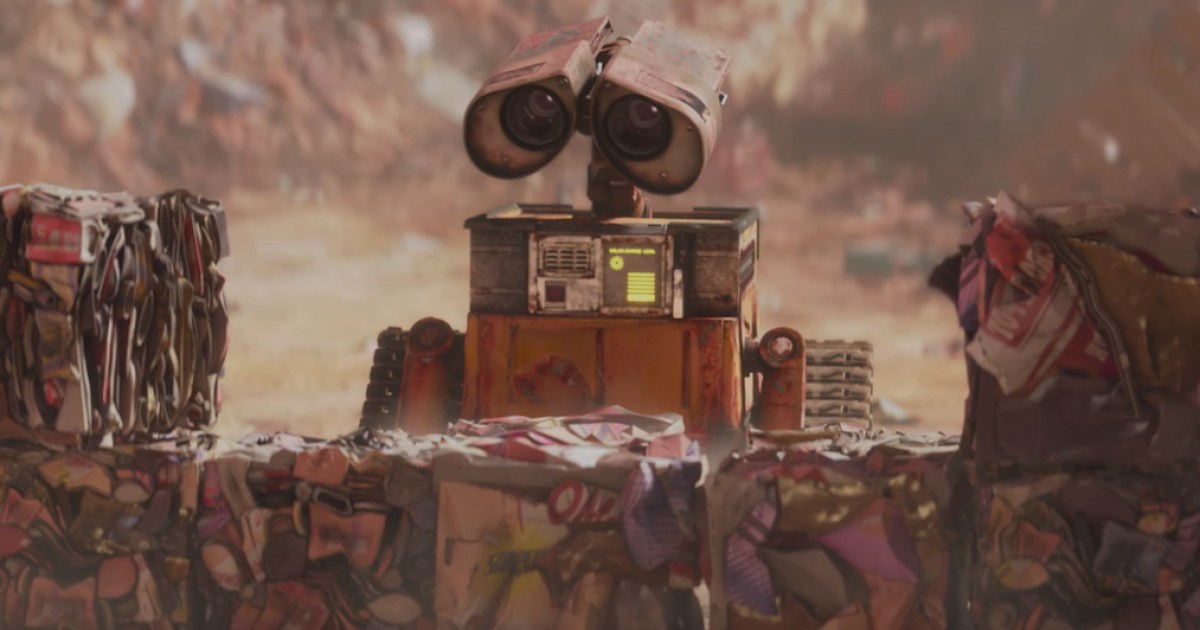
Pixar’s Wall-E painted a terrifying picture of our AI future
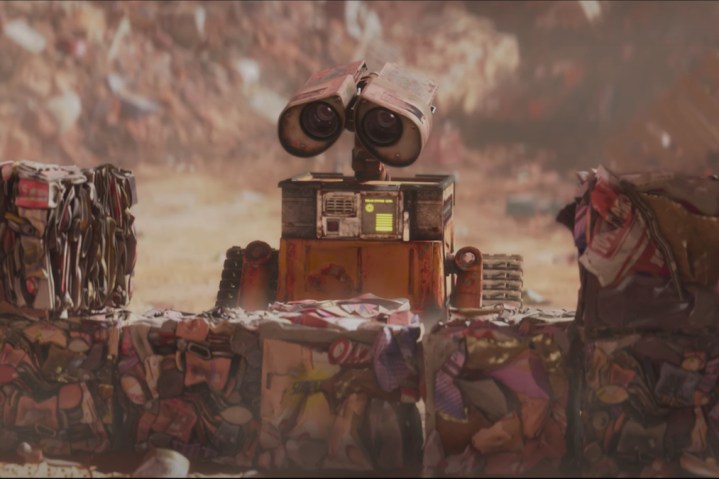 Pixar
Pixar
“A is for Axiom, your home sweet home. B is for Buy N Large, your very best friend.” — An AI schoolteacher in Wall-E.
On its surface, the space adventure Wall-E is just another pleasant Pixar production — one that tells a relatively simple story about a romance between its titular trash compactor and the high-tech droid he crosses paths with on Earth. In case its dystopian, trash-covered version of Earth wasn’t enough of a hint, though, there’s more going on in Wall-E than you might initially think. Not only does the film find a way to make a pointed message about the apocalyptic danger of climate change, but it also packs in a warning about the true threat of artificial intelligence.
The fact that Wall-E does all of this without ever losing its family-friendly sheen is a testament to the skill of its creative team. That said, once Wall-E abandons the silent-movie-inspired romance of its Earth-set first act, it becomes clear that the animated film is as much a portrait of humanity at large gone dangerously astray as it is a love story between two robots. As a matter of fact, the film, which hit theaters 15 years ago, contains messages about artificial intelligence, human autonomy, and all-powerful corporations that are even more unnerving now than they were back in 2008.
The danger of relying too much on AI
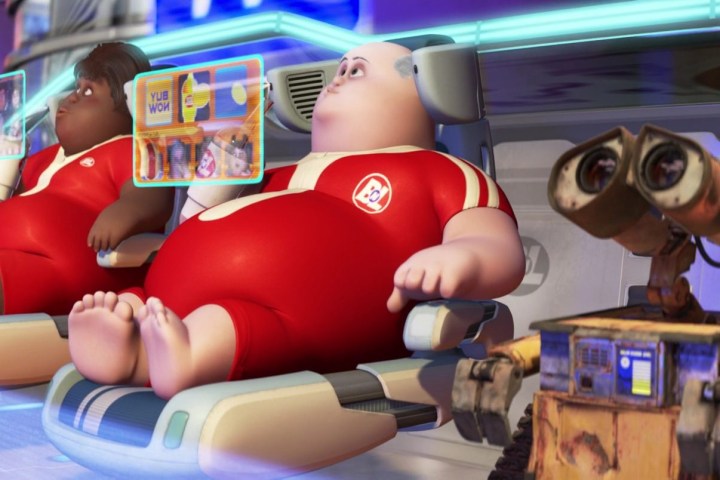 Pixar
Pixar
When WALL-E decides to follow his love, Eve, to space, he finds himself onboard the Axiom, an intergalactic cruise ship that has essentially kept humanity alive in the years since the film’s dystopian version of Earth became uninhabitable. Once there, Wall-E offers viewers some startling insights into how the universe’s sole surviving humans have spent the past several centuries in space.
For starters, it’s revealed that the ship’s humans have become incapable of walking on their own because of the hover chairs they constantly float around in. Human-to-human contact, meanwhile, has been all but destroyed because everyone has become programmed to spend their days looking at the same virtual screens. If any of them do converse with each other, it’s via Zoom-like virtual conference calls from their hover chairs. In a time when VR devices and headsets are becoming increasingly popular, it’s hard not to look at the humans in Wall-E — so disconnected from their physical lives and each other — and not cringe in both recognition and fear.
The same screens that have cut Wall-E’s humans off from each other? They also happen to be covered in 24/7 ads for products made by Buy n Large, the megacorporation that built the space yacht that took humanity away from Earth. The ship itself, in fact, is covered in constant Buy n Large ads and, in one of the most quietly chilling moments in any Pixar movie, it’s revealed that the vessel’s AI teachers use Buy n Large products to teach its child passengers the alphabet. The future presented in Wall-E isn’t, in other words, just one defined by disconnection and lethargy, but by corporate branding and advertising.
Wall-E shows a human society that is all too willing to let machines take over
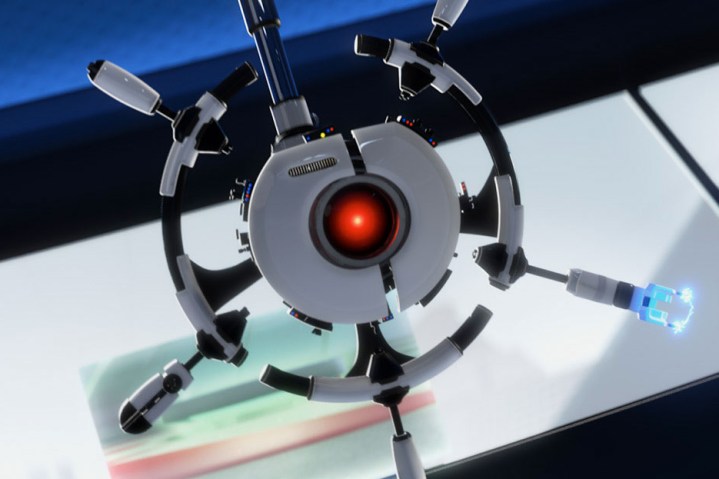 Pixar
Pixar
In this same sequence, Wall-E also catches up with B. McCrea (Jeff Garlin), the captain of the film’s central spaceship. McCrea, like all of the Axiom’s passengers, is guided every day by his robot assistants and hover chair, as well as his sentient autopilot AI companion, AUTO. Over the course of Wall-E’s second and third acts, viewers slowly discover that it’s AUTO who is piloting the Axiom on a daily basis and controlling the narrative provided to its passengers. McCrea and everyone else aboard the ship have already ceded control of their lives by the time Wall-E finds them. To say that they’re asleep at the wheel is an understatement.
Given the current, real-life rise of artificial intelligence, Wall-E’s plot feels as timely a warning as ever about the direction humanity could take should we become too reliant on unnecessary tools. In moderation, technology has the power to help humanity rise to new heights, but if we grow accustomed to letting robots and AI do all the work for us, we risk losing total control of our lives. Even worse, we risk severing the emotional and physical connections that allow humanity to thrive and continue to exist.
In a pointed bit of commentary, Wall-E reveals that AUTO was instructed to prevent humanity from ever returning to Earth by Fred Willard’s Shelby Forthright, the owner of Buy N Large who was the President of Earth at the time that the planet was evacuated. In 2008, the thought of a corporate billionaire becoming the elected leader of humanity might have seemed laughable. Nowadays? Not so much. Wall-E, to its credit, makes it pretty clear exactly what can happen when humans place too much trust in corporate figureheads.
Wall-E succeeds as both a love letter…and a warning
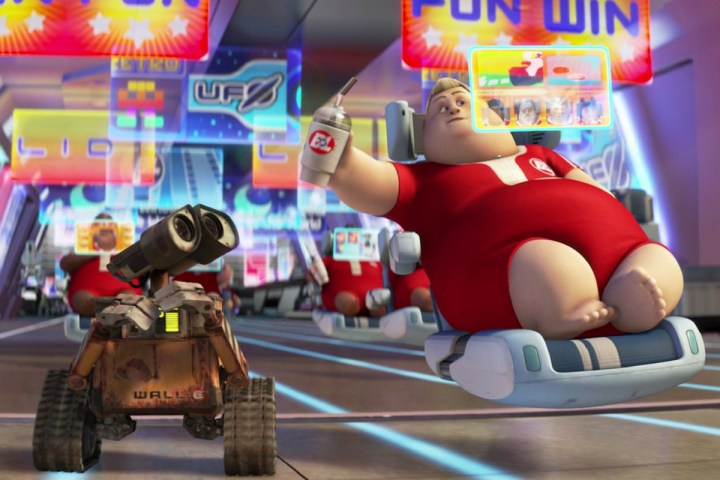 Pixar
Pixar
Wall-E isn’t as dystopian as all these details suggest. In its third act, the film finds hope not just in the form of WALL-E and Eve’s bond, but in the surprising resiliency of its human characters. In that way, Wall-E doubles as both a warning and a love letter. It’s a film that loves humanity and the planet we call home, and it insists that the two cannot exist separately from each other. For that reason, 15 years after its theatrical release, the film’s power has grown exponentially, as has its relevancy.
Wall-E is streaming now on Disney+.
